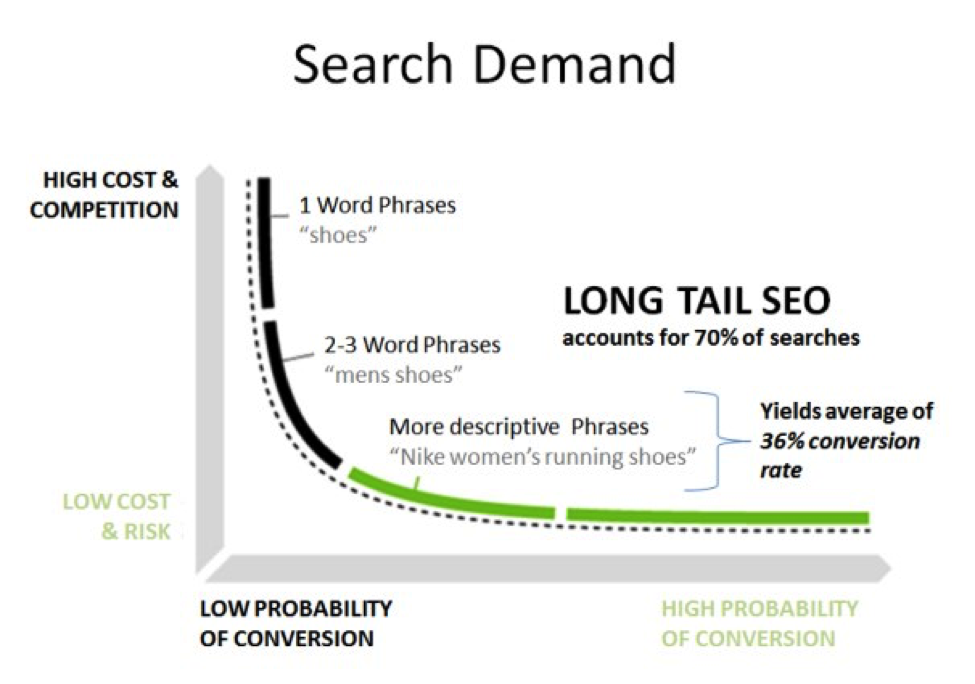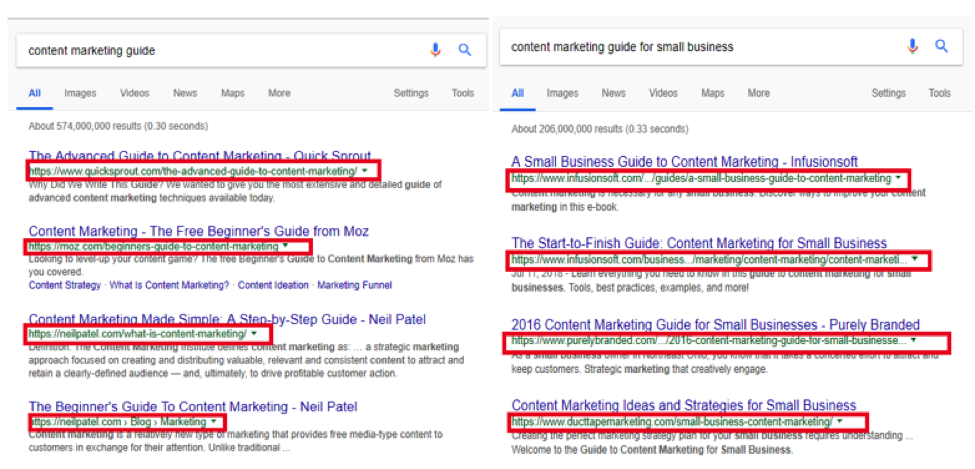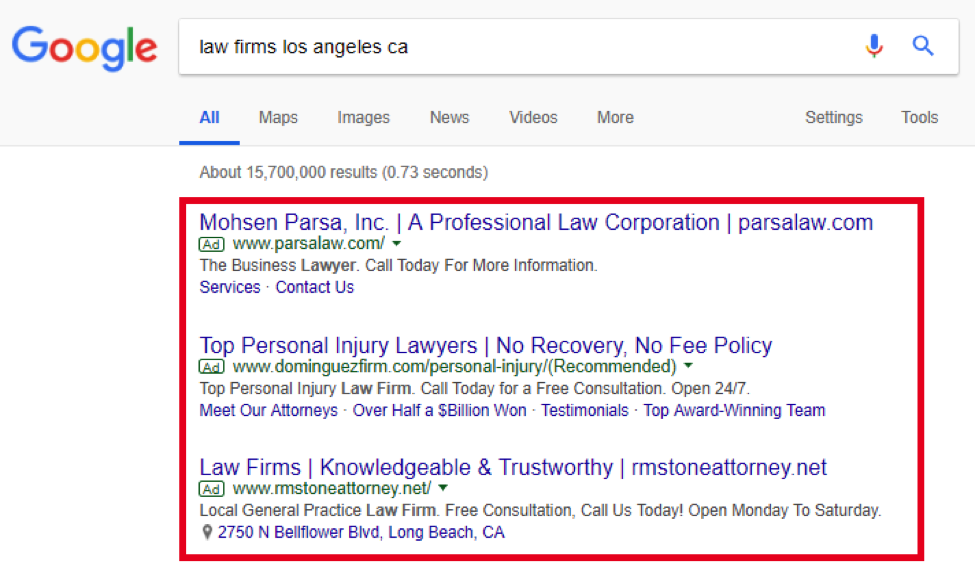3 steps to Get Your Small Business on the First Page of Google
Every business is crazy about getting to the first page of Google and we can understand why.
Quick Links
Hubspot says that 75% of people never even make it to the second page of Google.
If you don’t have a strategy to get you to the top then there is very little chance that you’ll ever get noticed.
When we were gathering information for this article we noticed that others believed that you could not get to the first page of Google.
In fact, many specialists called it idealistic. They pushed the idea that businesses have to buy ads to get on the first page.
We know this is not true. Especially if you are a small or local business, Google is on your side.
If you’ve been trying for some time to get on the first page of Google and failed, there is one reason for that.
You have no SEO strategy.
Getting on the first page of Google search results requires a mix of SEO knowledge as well as hard work.
In this article, we are going to help you better understand how to get your business on the first page of Google.
1. Long Tail Keywords
It’s well-known that using SEO the right way can skyrocket your traffic. SEO deals with using the right keywords in order to boost organic traffic to your website.
However, to do it right, you need to understand the difference between short-term SEO keywords and long-tail keywords.
For a better understanding of the difference between short-tail and long-tail keywords, let’s take a look at the following chart:

Image credit: Union Street Media
Shorter keywords that consist only of 1 or 2 words that are highly competitive. In the meantime, more descriptive phrases are often better quality and easier to rank for.
For example:
– Short-term keyword: Restaurants
– Long-tail keyword: Restaurants in Santa Monica, California
Long-tail keywords require specification. A standalone long-tail keyword doesn’t work miracles, but including several of them will do the trick.
How do you compose the right long-tail keyword?
– mention your audience: instead of just putting a target word
– mention the purpose: describe the target keyword by adding its purpose
– add the key feature: connect the main keyword with its distinctive feature
Let’s take a look at how it works:

In the example on the left, the search results are overcrowded with high-profile and popular websites.
Meanwhile, the results on the left are represented by less popular websites.
All we did was add a target audience to the three main keywords.
Long-tail keywords are more effective because they target more specific information.
This is where small businesses can stand out.
Most small businesses service a small area. If you want to get your business on the first page of Google you need to dominate these long-tail keywords.
2. Content
Once you have determined what long-tail keywords you want to rank for then you need to start creating content around those keywords.
Content is still king.
You want to create high quality, long, valuable content that people want to read. However more importantly that people also want to share and link to.
The purpose of Google is to provide the best and highest quality information to people searching for information.
Thus, if you want to get your business on the first page of Google, make sure that your content is high quality and provides value to others.
Google will reward you for being so giving.
3. Backlinks
What is the best way to get backlinks?
After you are done writing an amazing piece of content, you should send your content to people who have shared similar content. They are more likely to share your content and be happy to deliver that value to their readers.
If you are struggling to write engaging content then this article will teach you how to make engaging content.
If you are a small business then you should be reaching out to local businesses in your area to get inbound links, send your content to new agencies, find local bloggers to work with.
If you provide valuable content then people will want to link to you and backlinks will naturally form.
4. Pave your way to the top with Google Ads
I know when we started that we said you did not have to pay to get to the top of Google. This is true, however; if time is not on your side, then running a Google Ads campaign can instantly get you to the top.
Working with organic ways of promoting your website, depending on your competition, still see average results.
The reason why is if you are still shown below three or four ads.

This environment can hurt even the top performing SEO techniques. Google is a business and you need to take this into consideration before you make your strategy.
If you want to learn more about Google Ads read this Foolproof Guide to Setting Up a Google Ads Campaign.
5. Get to work!
Getting your business on the first page of Google requires a lot of work.
You need to provide your visitors with high-quality valuable content and then you need to spread your message far and wide.
However, you also need to have a strategy to get there.
If you are struggling to devise a plan, message us today!
Photo by kaushik vijayan on Unsplash
How to Use AI-Powered SEO Tools for WordPress eCommerce
SEO is a critical factor in the success of any e-commerce WordPress store. As competition…
0 Comments11 Minutes
Why Short-Form Videos Are the Future of Content Marketing
Your Instagram customers spend over 50% of their time watching short-form videos and reels. Rather…
0 Comments12 Minutes
The Role of Digital Marketing in Business Growth
Online marketing touches every aspect of a business, whether it is initiating the idea or for an…
0 Comments3 Minutes
AI Meets Authenticity: Balancing Automation and Human Touch in Content Marketing
Is your brand starting to sound like a robot? In a world where algorithms write faster than any…
0 Comments8 Minutes
Essential Tools for Enhancing Web Design and UX Hosting
Have you ever visited a website that felt slow, clunky, or confusing? A website that is poorly…
0 Comments11 Minutes
How a Mini Cart Transformed My Store’s Shopping Experience
Okay, real talk—running an online store is hard. You think you’ve got everything figured out, you…
0 Comments9 Minutes
Balancing Your Security Initiatives With Industry Compliance Requirements
Managing a business today comes with a number of daily battles that need to be fought. Resources…
0 Comments11 Minutes
Best plugins to enhance the customer shopping experience
Customer experience is a key part of every online store. A good experience helps customers find…
0 Comments7 Minutes








